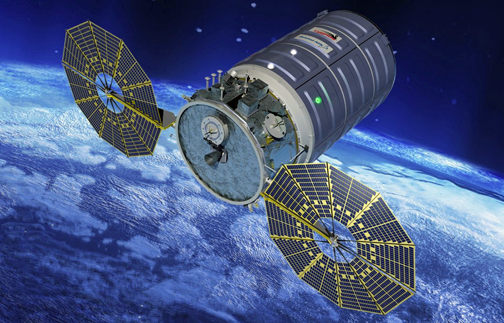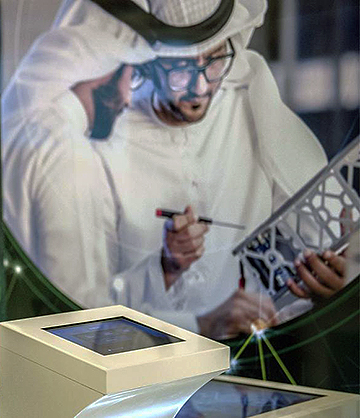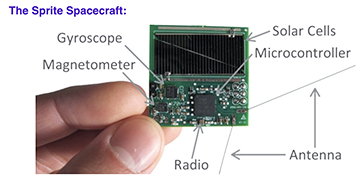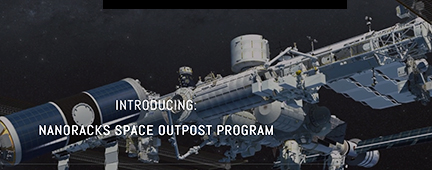

NanoRacks successfully completed the company’s sixth CubeSat deployment mission from Northrop Grumman’s Cygnus (S.S. John Young) spacecraft, which departed the International Space Station (ISS) on February 8th, 2019, and performed a number of on-orbit activities, including another historic deployment.

Artistic rendition of the Cygnus spacecraft. Image is courtesy of Northrop Grumman.
Cygnus maneuvered to a higher-than-Space Station altitude (445 kilometers) where the NanoRacks External Cygnus Deployment mission released two of the three CubeSats on board into orbit — MySat-1 and the second CHEFSat satellite. The spacecraft then lowered to an altitude of 300 kilometers to deploy KickSat-2.

Work on the MySAT-1 satellite at Yahsat Space Lab in Masdar City, a collaboration between the Masdar Institute of Science and Technology, part of Khalifa University of Science and Technology, Northrop Grumman Innovation Systems (formerly Orbital ATK) and Al Yahsat Satellite Communications Company. Photo is courtesy of Vidhyaa for The National infosite.
The deployment of MySat-1 marks an additional historic moment for NanoRacks, being the first payload that the company has launched and deployed from the United Arab Emirates (UAE). MySat-1 is a joint program from Yahsat, Khalifa University of Science and Technology and Northrop Grumman and is the first satellite built at the Yahsat Space Lab in Masdar City and among the first to be developed by local students.

Photo of the Sprite, a tiny (3.5 by 3.5 centimeter) single-board spacecraft that has a microcontroller, radio, and solar cells and is capable of carrying single-chip sensors, such as thermometers, magnetometers, gyroscopes, and accelerometers. To lower costs, Sprites are designed to be deployed hundreds at a time in LEO and to simultaneously communicate with a ground station receiver.
KickSat-2 is a collaborative CubeSat from NASA’s Ames Research Center in California’s Silicon Valley and Stanford University. KickSat-2 was selected for flight by NASA’s CubeSat Launch Initiative (CSLI) and was launched as the sole CubeSat in the Educational Launch of Nanosatellites-16 (ELaNa-16) mission complement, sponsored by the NASA Launch Services Program (LSP).
KickSat-2 was deployed well below the ISS altitude due to the satellite sub-deploying smaller “ChipSats,” a prototype representing a disruptive, new, space technology. These ChipSats, also known as “Sprites,” are tiny spacecraft that include power, sensors, and communication systems on a printed circuit board that measure 3.5 by 3.5 centimeters, with a thickness of just a few millimeters and a mass of only a few grams. The ChipSats are expected to be in orbit for a few days before burning up.

The NanoRacks External Cygnus Program is the first program to have leveraged a commercial resupply vehicle for use beyond the primary cargo delivery to Space Station, demonstrating the future possibilities for using cargo vehicles for the NanoRacks Space Outpost Program and other commercial space station activities. With successful completion of this mission, NanoRacks has deployed 35 satellites from the Cygnus into multiple orbits.
Executive Comments
The NanoRacks VP of Business Development and Strategy, Allen Herbert, said the company could not be more excited about all of the activity happening in the space industry in the UAE. NanoRacks has a number of groundbreaking programs in the works and the MySat-1 deployment is the perfect way to kick start NanoRacks activities in the region.
NanoRacks External Payloads Manager, Henry Martin, noted that this entire mission is a testament to the flight safety teams in-house at NanoRacks and at NASA’s Johnson Space Center as well as the flight operations team at Northrop Grumman. The company was able to shepherd some extremely challenging payloads through the NASA system on a timeline that met the needs of the firm’s customers. This required many teams working closely together and the company is proud to have yet another successful mission that demonstrates the extended use of cargo vehicles.
To date, NanoRacks has deployed 231 satellites into LEO.
